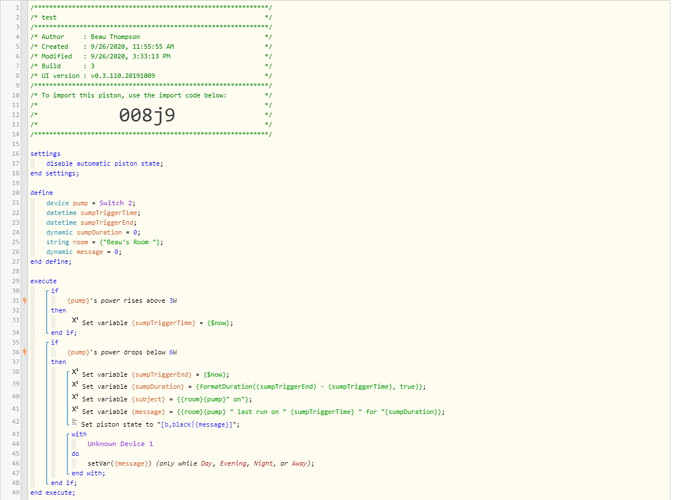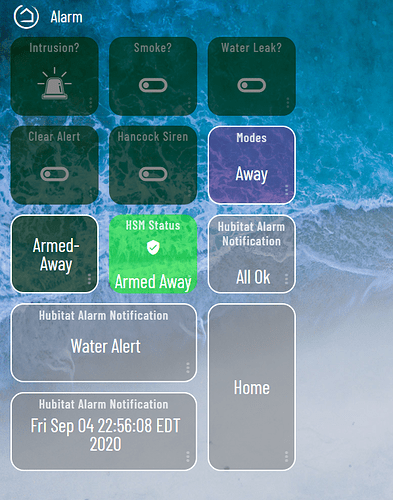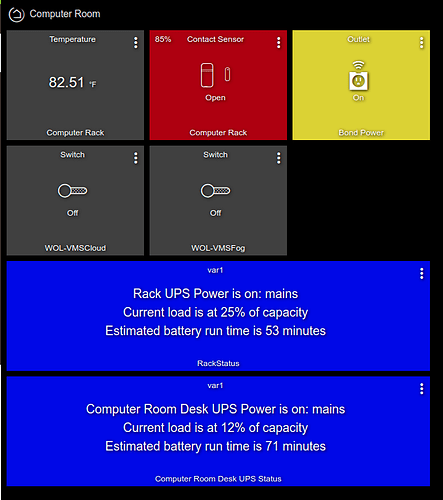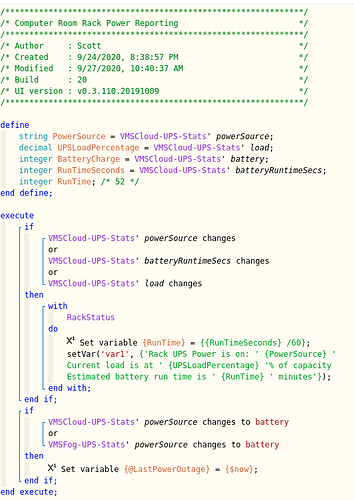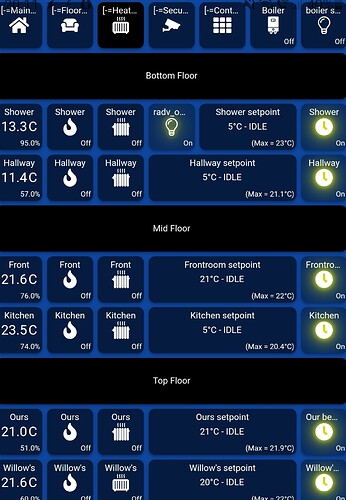The webcore device types are more of a suggestion than anything else. Add the device to the actuator group in webcore.
Sent you a private message.
It's a custom device handler called Virtual Attributes Set that is linked above. You can write into the variables in a device created with it and display them in a tile of type "attributes".
If it’s useful in my MQTT app I include a virtual text driver including separate prefix and suffix settable text that will display on the dashboard. Supports html . I’ll post a link here to the updated (simplified) github release tomorrow. Doesn’t require MQTT.
Kevin, that would be awesome.
I'm not at home but here's a link to the in progress (beta 3e) version - not sure if it will do what you want. I haven't read this whole topic.
https://raw.githubusercontent.com/xAPPO/MQTT/beta3/MQTT%20Text%20beta%203e%20(test)
commands
setText (string) - includes any prefix and suffix
forceText(string) - ignores prefix and suffix
setSuffix(string)
setPrefix(string)
setBattery(integer)
string values can be html tags, so could create say a 3 line display on tile using <br>
also includes a virtual battery % capability
Display on dashboard using an attribute template and the 'text' attribute (could use prefix, suffix or battery if wanted)
Hi Robert,
I have been following this subject with great interest. I have it working with a virtual omnisensor device. The only problem I have is a cannot seem to put html code for new line
in my text as Hubitat strips it out. Any suggestions on getting around this?
I know in app inputs, text from the user will get "sanitized" to remove HTML. I'm not sure if the same happens when manually putting in text/string values for commands on a device page (I'd guess not). To do what you want from an app/automation, I'm guessing you'd need either a custom app or a driver that will take legal characters in its own markup language and convert them to HTML. I'm not sure if anyone has developed one or found another workaround, but I think this would at least be the explanation for the issue you see.
Thanks, I'll watch for another solution.
Seems like I opened a real can of worms from my first post. In regards to HTML formatting, I've done the simplest case where I have placed a HTML line break into output variables displayed into a dashboard for aesthetics. I am doing this with Webcore.
Here's the code.
Sadly, you can't see the line break formatting because they are suppressed looking at the display.
Thanks for that - I'm not a webcore user at this time. I do use Tile Master and perhaps that will let me accomplish my goal. Thanks again.
Evening. This has allowed me to design some pretty cool info on my sharptools dash. Much appreciated. As explained via pm, I've installed so much stuff since I switched to hubitat back in july that I've kind of lost track of some of the initial bits and bobs.
So this is a late 'thank you!'.
Is there a way of adding a carriage return to the variables? Wondered if there might be some kind of standard html code etc?
Again, many thanks!
You might try set the variable with a < br > at the end
foo
Not sure if it will work..but easy to try
< br/ > (remove the spaces...)
For the SharpTools Hero Attribute tile, it needs to be a standard text newline character (not HTML).
Edit: How are you setting the values for these virtual devices? IIRC, the device page doesn't allow entering multiple lines.
\n then?
